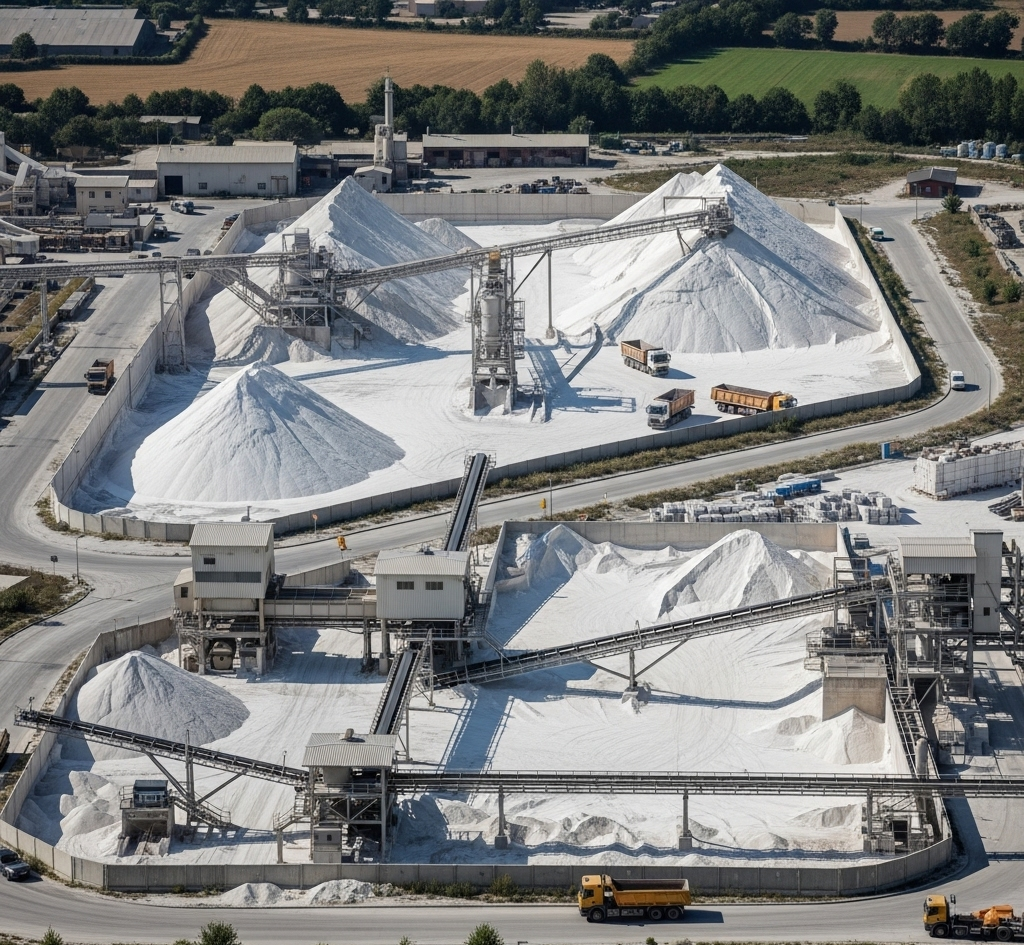
The nonmetallic mineral manufacturing industry—encompassing products like glass, ceramics, cement, and aggregates—relies heavily on effective procurement strategies to maintain operational efficiency, control costs, and ensure product quality. From sourcing raw materials like silica, clay, or limestone to managing complex global supply chains, procurement in this sector is both a critical function and a potential source of risk. This blog post explores key strategies, risks, and best practices for procurement in nonmetallic mineral manufacturing, offering insights for professionals aiming to optimize their processes.
Procurement in this industry involves acquiring raw materials, equipment, energy, and services necessary for producing nonmetallic mineral products. Unlike other manufacturing sectors, nonmetallic mineral manufacturing often deals with finite, geographically specific resources, such as quarried materials, which introduces unique challenges. Procurement professionals must balance cost, quality, sustainability, and supply chain reliability while navigating regulatory and environmental constraints.
Resource Scarcity and Location Dependence: Raw materials like high-purity silica or specific grades of limestone are often available only in certain regions, making procurement geographically constrained.
Price Volatility: Fluctuations in energy costs (e.g., natural gas for kilns) and raw material prices can significantly impact production costs.
Regulatory Compliance: Environmental regulations, mining permits, and safety standards add complexity to sourcing materials and selecting suppliers.
Supply Chain Disruptions: Global events, such as trade restrictions or natural disasters, can disrupt the availability of critical inputs like imported kaolin or feldspar.
Sustainability Pressures: Increasing demand for eco-friendly practices requires procurement teams to prioritize sustainable sourcing and low-carbon supply chains.
To address these challenges, companies in nonmetallic mineral manufacturing can adopt the following strategies:
Relying on a single supplier for critical raw materials, such as high-grade quartz or gypsum, increases vulnerability to disruptions. Diversifying suppliers across multiple regions or countries can mitigate risks from geopolitical issues, natural disasters, or supplier insolvency. For example, a cement manufacturer might source limestone from multiple quarries to ensure continuity if one site faces regulatory delays.
Building strong, collaborative relationships with suppliers fosters reliability and can lead to preferential pricing or priority access during shortages. Regular supplier audits and performance reviews ensure quality standards are met, particularly for materials like alumina or zircon, where consistency is critical.
Leveraging technology, such as procurement software or supply chain analytics platforms, can streamline processes and improve decision-making. Tools like SAP Ariba or Coupa enable real-time tracking of inventory, supplier performance, and market trends, helping procurement teams anticipate shortages or price spikes.
With growing regulatory and consumer pressure, incorporating sustainability into procurement is essential. This includes sourcing from suppliers with low-carbon practices, using recycled materials (e.g., recycled glass in glass manufacturing), and optimizing transportation to reduce emissions. For instance, choosing rail over trucking for bulk materials like sand can lower both costs and environmental impact.
Maintaining strategic stockpiles of critical materials can buffer against supply chain disruptions. However, overstocking ties up capital and storage space, so procurement teams should use demand forecasting and just-in-time inventory practices to balance risk and efficiency.
Despite strategic efforts, procurement in nonmetallic mineral manufacturing faces several risks:
Geopolitical tensions, such as trade tariffs on imported materials, or natural events like hurricanes affecting quarry operations, can halt production. For example, disruptions in kaolin supply from key exporters like Brazil can impact ceramic production.
Fluctuations in energy prices (e.g., for firing kilns) or raw material costs can erode profit margins. Hedging strategies or fixed-price contracts with suppliers can help mitigate this risk.
Variations in raw material quality, such as impurities in silica or inconsistent limestone composition, can affect product performance. Rigorous supplier vetting and quality control processes are essential to maintain standards.
Failure to comply with environmental or safety regulations can lead to fines, production halts, or reputational damage. Procurement teams must ensure suppliers adhere to local and international standards, such as those set by the EPA or EU REACH.
While sustainable sourcing is a priority, green suppliers may have higher costs or limited capacity. Balancing sustainability with cost-efficiency requires careful negotiation and long-term planning.
To navigate these challenges and risks, procurement professionals should adopt the following best practices:
Before onboarding suppliers, assess their financial stability, production capacity, quality certifications (e.g., ISO 9001), and environmental compliance. Regular audits and site visits can ensure ongoing adherence to standards.
Use data-driven insights to monitor market trends, supplier performance, and inventory levels. Predictive analytics can help anticipate price changes or supply shortages, enabling proactive decision-making.
Secure long-term contracts with flexible pricing mechanisms to hedge against volatility. Include clauses for quality assurance, delivery timelines, and penalties for non-compliance to protect against supplier risks.
Integrate sustainability into procurement policies by selecting suppliers with transparent environmental practices. For example, sourcing recycled aggregates for cement production can reduce environmental impact and appeal to eco-conscious customers.
Equip procurement teams with training in negotiation, sustainability, and digital tools. Understanding the technical aspects of nonmetallic mineral products (e.g., chemical properties of clay) can improve supplier discussions and material selection.
Work closely with production, quality control, and sustainability teams to align procurement with operational goals. For instance, coordinating with R&D can ensure raw materials meet new product specifications, such as high-strength glass for solar panels.
Procurement in nonmetallic mineral manufacturing is a complex but critical function that directly impacts operational success. By adopting strategies like supplier diversification, digital tools, and sustainable sourcing, companies can mitigate risks and enhance efficiency. Best practices, such as thorough supplier evaluations and cross-departmental collaboration, further strengthen procurement processes. As the industry faces growing pressures from cost volatility, regulatory changes, and sustainability demands, proactive procurement strategies will be key to staying competitive and resilient.
© 2025 Lasso Supply Chain Software LLC
Get instant access to our report on the Top Procurement Trends of 2025 by filling out the form below.

Get instant access to our report on the Top Procurement Trends of 2025.